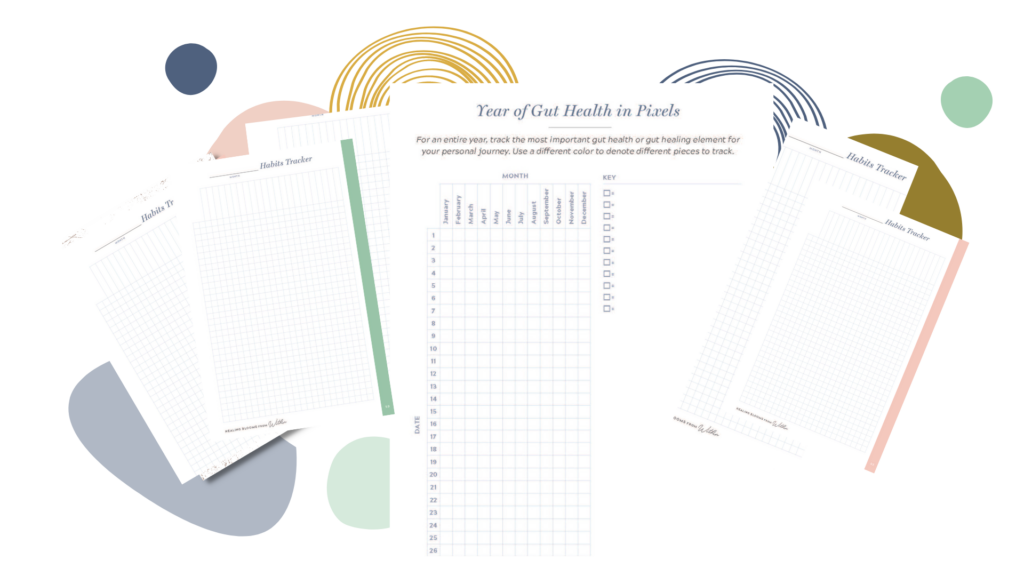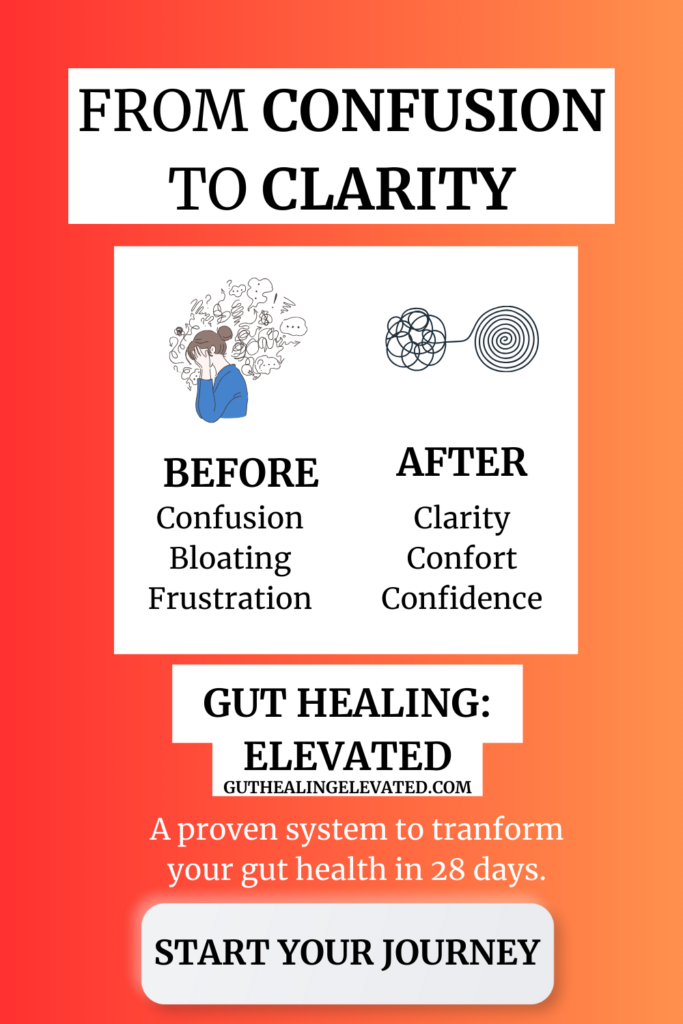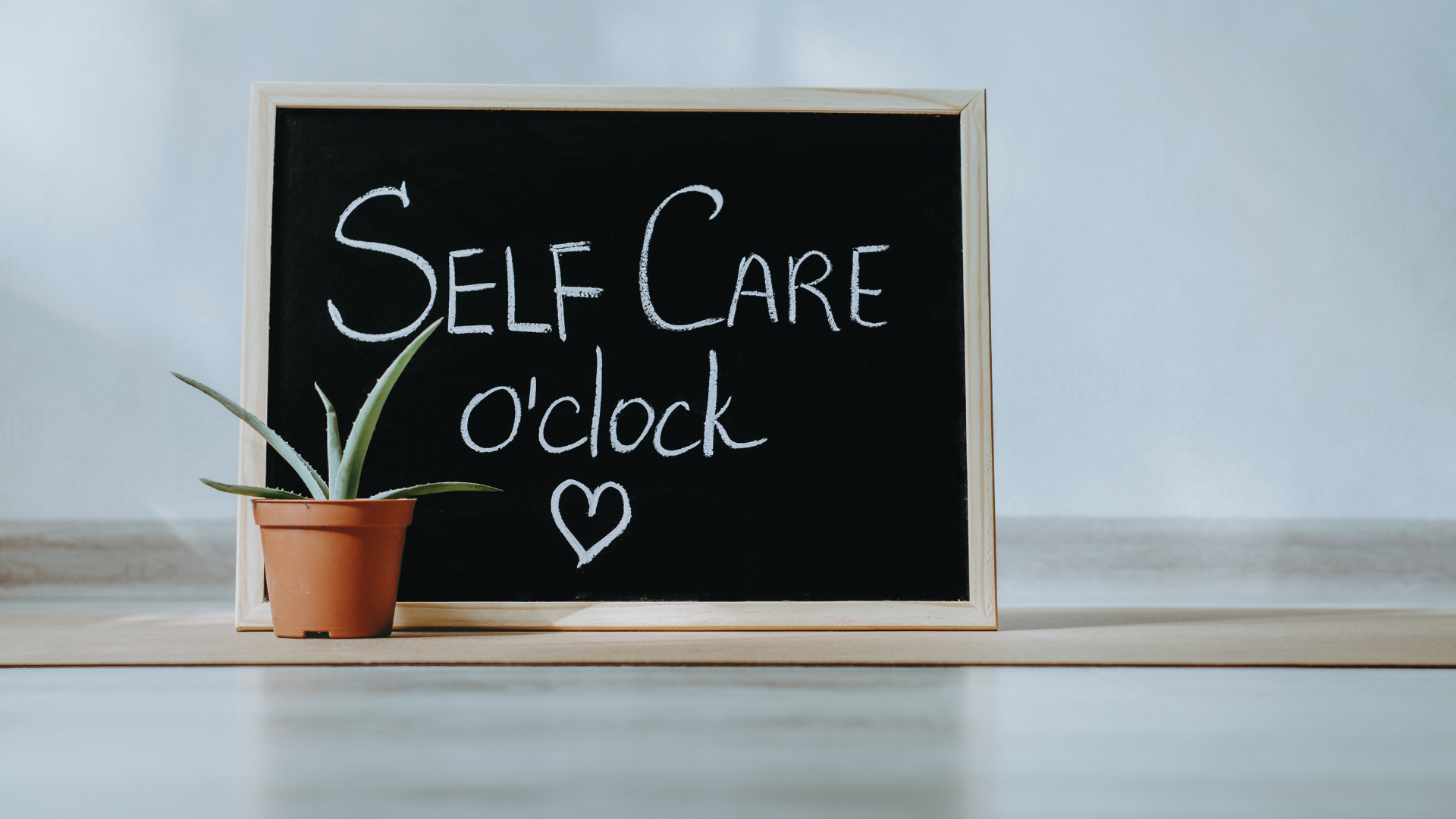If you’re looking for a habit tracker bullet journal printable you’ve come to the right spot.
And if you are someone that struggles with establishing healthy habits, join the club.
This was (and still is) one of the hardest parts of my gut-healing journey.
I struggled with this for a long time until I found practices and methods that worked for me.
Changing your lifestyle in order to promote gut-healing is INCREDIBLY difficult, even if it may not seem that way initially.
Simple things such as gentle exercise, time in the sun, and time spent relaxing seem easy to implement, but they often can be left behind if we aren’t careful.
Unfortunately, gut healing builds on these foundational practices in order to prep your body for repairing.
If we refuse to establish these new habits, the healing is slower (or does not occur at all).
So… how do we establish these great habits?
It starts with a little bit of practice.
The Science Behind a Habit
A habit may seem fairly easy to understand, but it is actually a fairly complex process.
Habits are basically a routine that our brain performs in specific times or circumstances.
Our brain is hardwired to perform tasks that release dopamine (a neurotransmitter) in order to help us feel good. One specific region of our brain, the basal ganglia, helps to hardwire this connection between what feels good and our tangible actions.
Unfortunately, a lot of what may make us FEEL good is not actually beneficial for our overall health. This forms a lot of bad habits and can stand in our way of making habits that are not necessarily the most fun.
So in a sense, forming a habit is REWIRING your reward pathways in order to establish new links.
See why building these better habits can be so difficult? A single habit takes days of practice and brain retraining to achieve.
![The Habit Loop Habit Tracker Journal [printable] agutsygirl.com](https://agutsygirl.com/wp-content/uploads/2023/02/The-Habit-Loop-Habit-Tracker-Journal-printable-agutsygirl.com--683x1024.png)
The Habit Loop
A habit does not often stand alone, but is normally triggered by a certain environment or activity.
This is where the “habit loop” comes in.
This was a discovery by psychologists at MIT that describes a feedback loop that occurs in our very brains.
Cue
The habit starts with some sort of environmental or circumstantial trigger.
This could be an emotion, a place, or virtually anything that sparks up the desire to take an action.
Some examples include:
- feeling bored
- feeling tired
- seeing a friend
- being in a high-stress situation
Craving
This is that desire to take an action. Your brain pushes you to DO something in order to expand on the stimulus.
Response
Your actual action occurs here.
WHAT you do becomes your habit.
Reward
Your brain releases dopamine, further expanding on its own reward pathway.
The problem with this loop is that it is quite literally never-ending.
You can continue to do the same habit, or in our case avoid doing a habit, because of the way in which it makes you feel.
Our brain will constantly lean towards tasks that make us instantly feel good, and shy away from those that do not hit us with the same rewards.
Rewiring Habits
In order to rewire habits, we have to work extremely hard.
It takes dedication and drive in order to shy away from our natural tendencies and introduce healthy lifestyle changes.
The good news is that there are several practices that make this rewiring much easier.
One of my favorite ways to incorporate specific habits has been bullet journaling.
Keeping track of your habits is one of the best ways to ensure that you are fulfilling your goals for the day.
I love journaling in this way for several reasons:
It holds you accountable
Keeping track of your daily habits is a daily reminder of what you need to do in order to improve your health.
Reflecting at the end of each day holds you responsible for the choices you made that day, and the way in which you chose to spend your time.
Visually seeing the tasks you did or did not complete helps you see the positive change (or lack of it) that occurred over the time period.
It helps you see long-term progress
One of the most frustrating parts of a gut healing journal can be not seeing as much progress as you want.
Gut healing is a long-term journey that can sometimes take years on end.
Keeping record of the small things you are doing each day is a great way for you to see the ways in which you are supporting your health.
It is customizable
One of the best things about journaling is that it is entirely YOURS.
If you need to tweak a habit or goal to better fit your daily life, you can. It is something that you and you alone have authority over.
Habit Tracker Bullet Journal [printable]
Click HERE to save this habit tracker bullet journal printable for later.
![Habit Tracker Bullet Journal [printable] agutsygirl.com](https://agutsygirl.com/wp-content/uploads/2023/02/Habit-Tracker-Bullet-Journal-printable-agutsygirl.com_-410x1024.jpg)
How to Habit Journal?
Habit journaling can be done in many different ways, so it is really up to you to figure out what you like best.
You can find a lot of free printables online if you are looking for a place to start, or just to get some inspiration.
Simple habit trackers such as this one below can be beneficial for giving you a baseline on what to include.
Printable templates are super easy to get ahold of are a great idea for anyone unsure what works best for them.

As with most things, starting simple is one of the best ways to get a hand of it.
Start with a very simple habit tracker and then progressively add to it if desired.
Habit journaling can be done in any notebook or document, but I recommend using my very own Habit Tracker.
This page is a daily habit tracker that lets you easily keep tabs on your goals, as well as the days in which you reach them.
You write down a particular habit in one column and then fill in all the days in which you complete it.
I find the horizontal layout to be very easy to follow and it makes it very easy to see your progress.
This page is included in both of my gut healing journaling systems, but it can also be purchased as a stand-alone product HERE.
This printable pdf makes for a easy and convenient habits tracker.
Another good format are circle trackers.
These are formatted in a way that can be more aesthetically pleasing to some people and are another way to see positive changes over a long period of time.
How Long to Track For?
This truly depends on the format of your tracker, but I find a monthly tracker to be the most beneficial.
I like seeing my progress in little snap shots and then getting to start over each month with new or added habits.
Some people prefer a yearly habit tracker or even a weekly habit tracker, but I find the optimal to be at that monthly point.
I would start with a monthly calendar to see if you like that format, and if not try and find your own happy point.
Elevate Your Journaling
If you want to take your bullet journal to the next level, there are several easy tricks you can follow.
Sometimes having your bullet journal look nice can help you feel more motivated to follow what you write down!
One of my favorite ways to make my pages look better are to use different colors for each specific goal.
This helps me to organize all of them in my head, and is an easy way to make the pages look nicer.
I also like to experiment with different designs and formats. While the graphing style is a great way to start, you can eventually elevate your tracking into something a bit more complicated and visually appealing.
Habit Inspiration
If you are feeling a bit lost about what habits to start implementing on your gut healing journey, I have a couple places to start.
I found these habits to be extremely helpful on my own journey.
Sleep tracker
I made it a goal to get at least 8 hours of sleep each night.
Sleep is ESSENTIAL for any type of cellular repair, including gut health.
This should be one of your top priorities for sure.
Water intake
I tried to drink at least 8 cups of water per day, which is critical for proper digestive function.
Water helps to move food through the GI tract and also lubricates our cells.
If you don’t like plain water, adding flavored electrolytes like LMNT can be another great option.
Daily sunshine exposure
I aim to get outside in the morning for at least 15 minutes for proper vitamin D exposure.
This is essential for cellular health and also can be converted to calcium for bone health.
At least 30 minutes of gentle exercise
This does not have to be anything crazy, but gentle exercise is very helpful for your entire lymphatic system.
Some of my favorite ways to workout are simply to go for walks around my neighborhood, do some light yoga, or play basketball with some of my friends.
It doesn’t have to be intense to be good for your body!
Eating a well-rounded breakfast
I know breakfast can be hard for some people, but it truly is necessary for maintenance of energy levels and metabolism.
It jump starts your metabolism for the entire day and “turns on” your digestive system.
One of my current favorite breakfasts has been oatmeal with almond butter, protein powder, and berries.
All of these habits are a great place to start, but feel free to customize them based on your own gut-healing needs.
Oftentimes practitioners will tell you the lifestyle changes that YOU need to make in order to reach your own goals.
Bullet-journaling is truly a great tool for making the long-term changes necessary for your gut health.
Incorporating this technique into your daily routine can be extremely beneficial in forming positive habits.
It is truly my favorite way to get my gut-healing foundations set in stone.
Hope you enjoy and try out your own bullet journal!
If you liked this habit tracker bullet journal printable article, you might also enjoy:
- DIY Journaling (how to make your own healing journal)
- Stop Making This One Food Journaling Mistake
- Anxiety Self Care Checklist {Episode 46 with Kerri Axelrod}
Xox,
SKH
🤰 bloating be gone! weight loss through optimal gut health for women
💃ʜᴇᴀʟ ʏᴏᴜʀ ɢᴜᴛ. ʜᴇᴀʟ ʏᴏᴜʀ ʟɪfe.
🫶🏻 founder gutbyome.com







